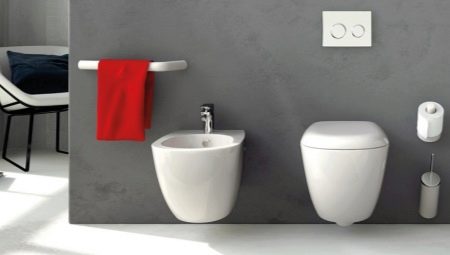Not so often, owners of apartments and private houses change the plumbing in their home - not even every major repairs. And when the time comes to decide on this, you can understand their desire to choose modern models of sinks for the bathroom and kitchen, as well as a stylish toilet with advanced functions. But not only beautiful forms and comfortable seats should be guided by buyers when choosing equipment for toilet rooms, but also take into account their practicality and operational capabilities. And these characteristics are highly dependent on the design of the toilet bowl.
Consider what types of toilets on this basis exist, what are their features, advantages and disadvantages. Knowing all of the above will help you better navigate the plumbing market and will not allow you to make a mistake in choosing.
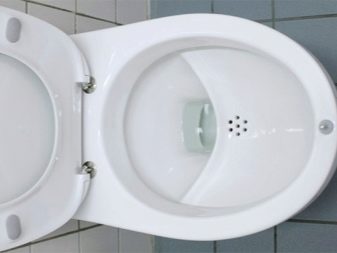
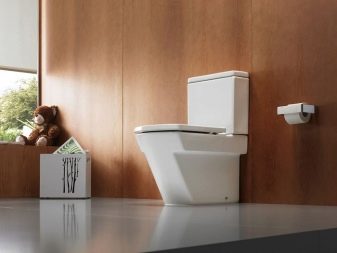
What does a dish bowl mean?
Structurally, toilet bowls exist in three main forms: visors, dish-shaped and funnel-shaped. We begin their description and comparison with dish-shaped bowls, which are, in fact, the very first designs of these plumbing fixtures installed in the bathrooms of Soviet-era residential and public buildings. And although this type of toilet is considered obsolete at present due to low hygiene, it is quite possible to purchase a new kit. That is, toilets with a dish-bowl are still produced in limited quantities for some institutions (for example, health facilities).
Such a bowl is a flush hole in the front part, and before it there is a molded concave rounded horizontal shelf resembling a plate, in which there is always a small amount of residual water after the next wash of feces.
This site is sometimes called a bed, into which waste products fall.
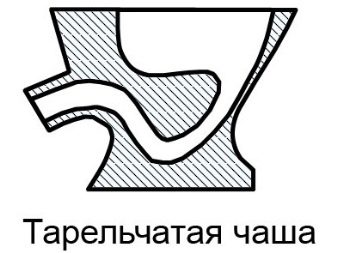
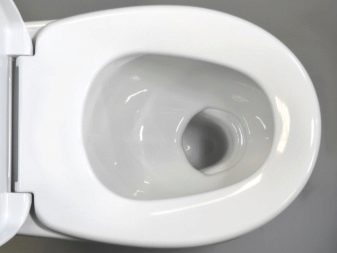
The pluses of this type of bed include the absence of splashing during the setting process. However, when flushing, spraying is observed. In a certain sense, such a plus is also relevant: there is a low probability of dropping valuable things into the sewer when using the toilet, where the toilet is with a shelf. Most likely, these things will fall on the shelf, not in the hole. Recently, more than one hundred thousand mobile phones have sailed away in an unknown direction after their owners visited the bathroom with a funnel-like or visor-looking toilet.
The disadvantages of such a device are much more:
- unpleasant odor from feces located on the surface of the shelf;
- if you try to wash off the waste, while continuing to be on the seat, then the wash-off flow of water can spray from below not only with water, but also with stool;
- the flush turns out to be of poor quality - you can’t do without an additional cleaning of the shelf with a brush;
- to flush, you must definitely get out of the seat, and hardly anyone will like to look at the waste products of the body’s vital functions;
- high water consumption for flushing;
- formation of salt deposits on the shelf due to the constant presence of water on it;
- loud noise when flushing.

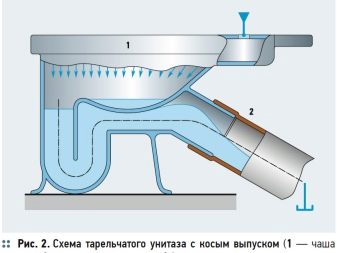
Whatever it was, but before the other types of internal design of the bowl in the distribution network was not. Almost everyone used these toilets until other modifications of the bowl appeared: visor and funnel-shaped.
But other manufacturers, who have not abandoned the production of toilet bowls, are working to improve modern models of such bowls, reducing the number of disadvantages.

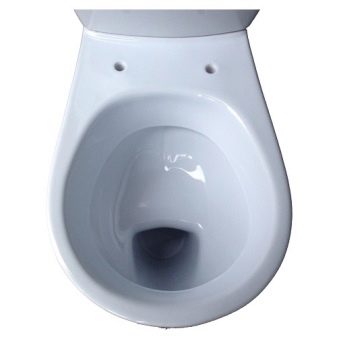
Description, pros and cons of visor type toilets
Peak Bowls - Perhaps the most common type for modern toilets. Their internal design is made in two versions.
- The back wall has a gentle slope to the flush hole located in the front of the bowl. A ledge is poured from the side of the front wall of the bowl - also under a slope, but sharper. The slope from the back wall is just a kind of visor that protects against splashing and splashing. The back gentle slope (peak) takes over the waste and ensures their smooth sliding down - into the wash hole with water. That is, the visor of the bowl performs a similar function of the shelf, which we observed in the dish-shaped analogue of the device. Only here feces do not linger on it.
- The second option, in which, on the contrary, the front wall — flat, and the flush hole is closer to the rear steep wall of the bowl. Such models of visor toilets are less common than the first option.
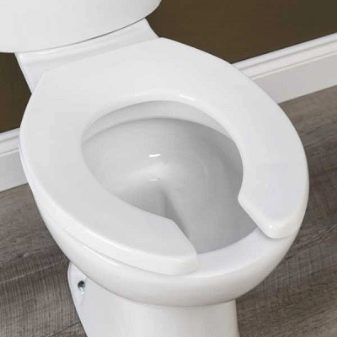

The advantages of visor bowls are as follows.
- During bowel movements, bursts are not observed. The peak copes well with its task - it provides a smooth movement of the contents into the wash hole.
- There is practically no water spray when flushing in compact models. In versions with suspended individual tanks, such a nuisance is quite possible due to the powerful water flow.
- Since feces move into the flush hole under the water level, most of the unpleasant odors are extinguished by it.
- A cleaner flush than dish-shaped models - the need to use a brush arises much less often.
Among the minuses, one can note a rather large water consumption for flushing, the periodic need for additional cleaning of the bowl after washing with a brush and another portion of water from the tank.
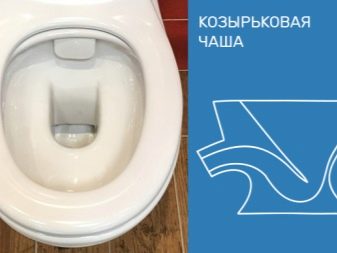
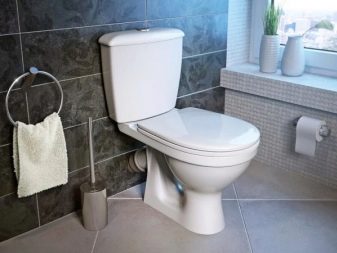
Features of the funnel-shaped toilet
In this model of the bowl, a flush hole with a certain water level is located in its center, and the walls of the bowl have a sloping shape in the form of a funnel.This arrangement of the bowl is considered the most hygienic, as the stool immediately enters the water, without causing sharp unpleasant odors in the room and without polluting the walls of the bowl. However, it is high the likelihood of bursts if the model is not equipped with a special anti-splash system.
In most models with funnel-shaped bowls, splashing during flushing is unlikely - unless the flush is arranged on one side, not in a circle around the bowl.
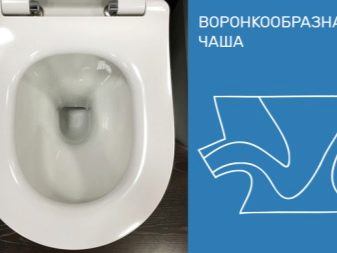
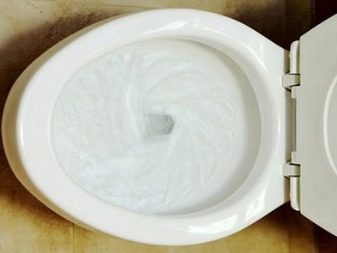
Appearance Forms
Manufacturers of plumbing in the form of the appearance of the toilet bowl are unlimited, most importantly, so that the height of the bowl and some other parameters that have strict standards do not go beyond the scope of GOST. For example, the height of an ordinary toilet bowl should be no higher than 40.5 cm, that of a child’s one should be 33.5 cm, the outlet opening should be 110 mm, and the weight that the bowl should support should be at least 200 kg.
Well, the external forms of toilet bowls can be found in trading organizations the most diverse and even fantastic. Here the main role is played by the factor of style and demand among customers.
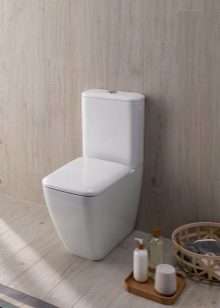
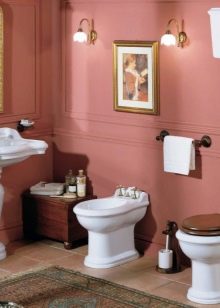

We list some of them.
- Round - by the type of flying saucers. Particularly common among hanging models of toilets.
- Rounded - in the shape of an egg.
- Square or rectangular - remind a box. Sometimes it’s hard to immediately understand what kind of product is in front of you.
- In the shape of snailswhen viewed from the side.
- In the shape of seats (toilet-compact).
How convenient some of the models of the presented forms can be said only by the owners themselves who purchased them. Sometimes from the outside the design seems attractive, but in fact the product is impractical.
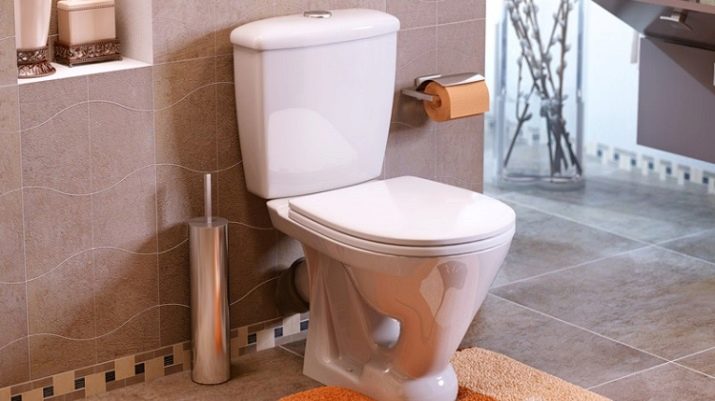
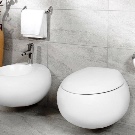
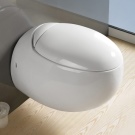
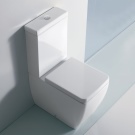
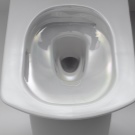
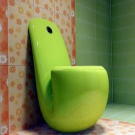
How to choose a model?
The choice of toilet is a very individual (if not intimate) question. It depends more on the personal preferences of the homeowners. Some people like snow-white plumbing, while others have nothing against a colored toilet, especially if it matches the ceramic floor or tile walls.
Someone urgently needs a miniature bowl for a small area of the bathroom, while others need a model with an enlarged bowl.
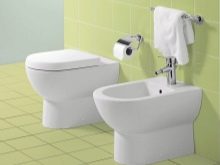

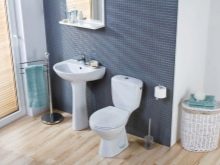
But general recommendations on the merits of the design of the bowl can be given.
- The most versatile visor-type bowl - It has incorporated the advantages of the two remaining species and has, in fact, a minimal list of disadvantages. Yes, a funnel-shaped model, if equipped with an anti-splash system, may turn out to be an ideal option, but the cost of the product will increase significantly.
- When choosing a visor device, pay attention to which side you will be more comfortable visor - front or back. For example, if the family is large, with children of different ages, the model with a visor in front of the bowl may be the best option for you. Young children usually sit down from the very edge of the toilet.
- Whatever type of toilet, try to choose a bowl without a rim - bacteria accumulate the least there.
- If you choose a visor bowl, see all models. Buy the modification in which the visor has a steeper descent. Such a toilet will be washed off cleaner - a brush may not be needed.
- In cases with problem water - a lot of salts, rust - discard dish-shaped bowls. They will require constant cleaning of the shelf.
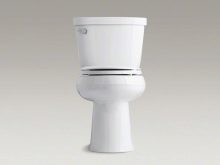
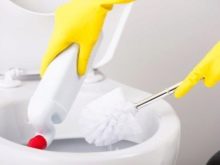
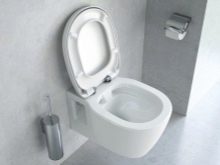
In all other respects, the owners of the apartment or house will sort it out themselves. Although the toilet is not the thing that needs to be emphasized in the interior of the entire dwelling, it must itself correspond to its general style.
See how to choose the right toilet in the next video.
